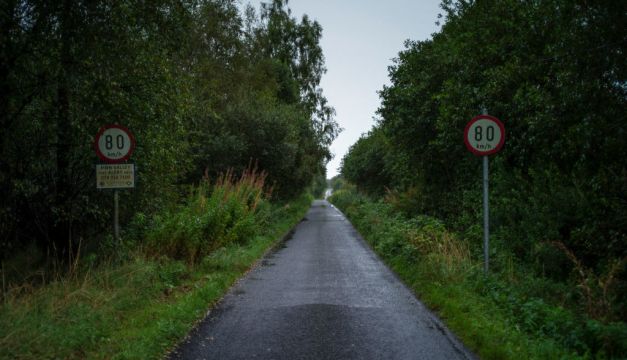Ireland has the third-highest level of deaths on rural roads in the EU with more than two-thirds of all road fatalities occurring outside built-up areas and motorways.
A new report by the European Transport Safety Council shows 67 per cent of all road deaths in the Republic between 2020 and 2022 were on rural roads compared to the EU average of 52 per cent over the same period.
Only Finland and Sweden have a higher proportion of all road fatalities on rural roads.
The ETSC report also revealed that average speeds on rural roads in Ireland have been increasing in recent years at a time when reductions in average speeds have been observed on similar roads in many other EU member states, including France and Austria.
The report showed that around 10,000 people were killed on rural roads, excluding motorways, in the EU in 2022.
It also highlighted that just 22 per cent of motorists in Ireland were travelling within the speed limit on rural roads with a 50km/h limit in 2022, with the compliance rate increasing to 75 per cent on rural roads with a 100km/h limit.
The report comes against a background of growing concern in Ireland at a sharp increase in road deaths in recent years after an extended period where there had been a strong downward trend in fatal collisions.
The lowest annual road fatality figure in recent decades was 135 in 2018 but the numbers have started increasing again to reach 188 last year.
A total of 55 people have been killed on Irish roads so far this year – 13 more than in the corresponding period in 2023.
They include Una Bowden (47) and her two daughters, Ciara (14) and Saoirse (9) who died in a road traffic collision when their vehicle collided with a truck on the N17 near Claremorris, Co Mayo on Tuesday.
Figures published by the ETSC show 294 people were killed in collisions on rural roads in Ireland between 2020 and 2022 compared to 112 road fatalities on urban roads and 31 deaths on motorways.
A third of all deaths on rural roads over the period were classified as vulnerable road users including 44 motorcyclists, 35 pedestrians and 15 cyclists.
On a positive note, the report showed the number of rural deaths in the Republic has fallen by 3.3 per cent annually on average over the past decade – a rate similar to the EU average.
The ETSC also calculated that rural road users in Ireland as well as Sweden and Slovenia enjoy a lower level of road risk than in other countries based on actual distance travelled by motorists.
In 2022, there were 3.2 deaths per billion kilometres travelled on rural roads in Ireland.
The rate was more than double the Irish level in several countries, including the Czech Republic, Austria and Latvia.
The ETSC, whose members include Ireland’s Road Safety Authority, has warned that national governments will need to invest significantly to improve the safety of rural roads in order to reach EU targets to cut road deaths in half by 2030 based on 2019 road fatality rates.
It claimed speed remains a major risk factor with large numbers of motorists still driving above the legal speed limit on rural roads in many countries, despite the availability and proven reliability of speed cameras.
The ETSC said local and national authorities should also take into account the increasing use of e-bikes in rural areas when planning investment on road safety measures.
It recommended that the automated eCall emergency system, which is required on all new cars, should be extended to other vehicles, particularly motorcycles.
The ETSC said the technology which automatically alerts emergency services to a collision could save the lives of incapacitated road users.
ETSC project manager, Jenny Carson, said rural roads were being made safer with interventions that do not need to be costly.
Ms Carson said they included road safety audits, analysis and subsequent treatment of high-risk sites, setting and enforcing appropriate speed limits.
Other examples are creating separate paths for cyclists and walkers and removing obstacles on the roadside.
“It is critically important that policymakers don’t forget rural roads where half of road deaths occur,” said Ms Carson.







